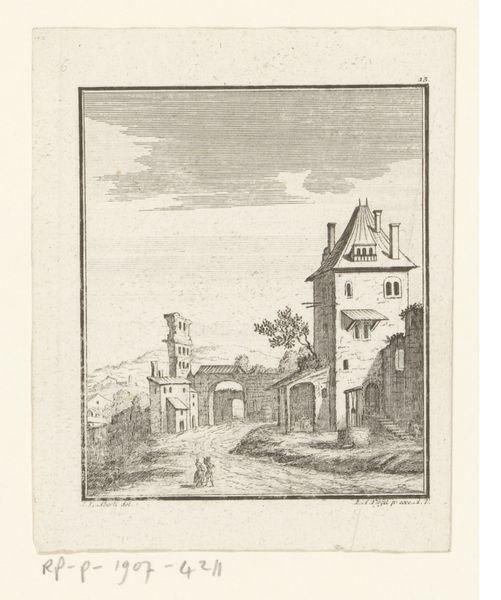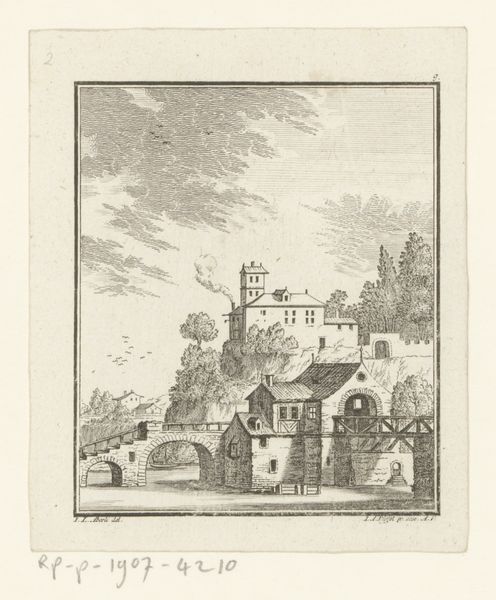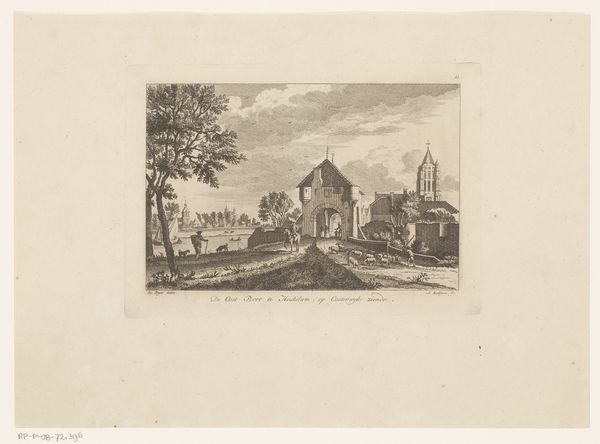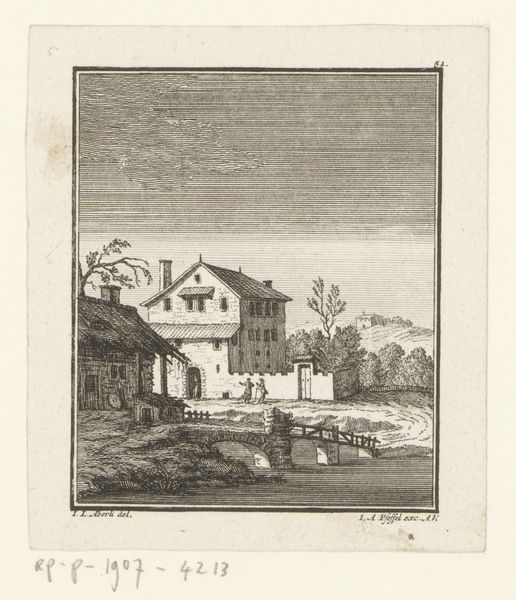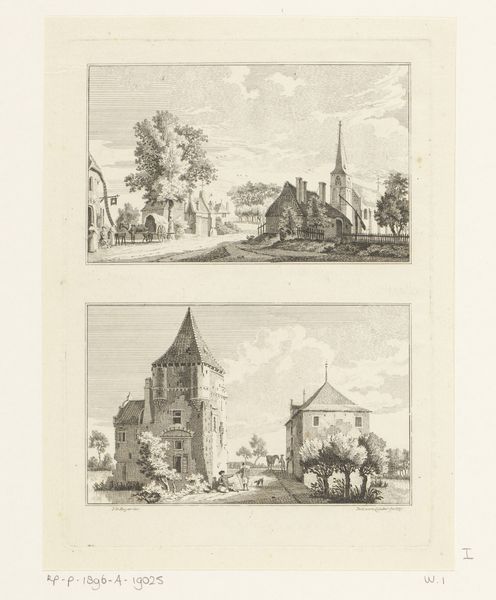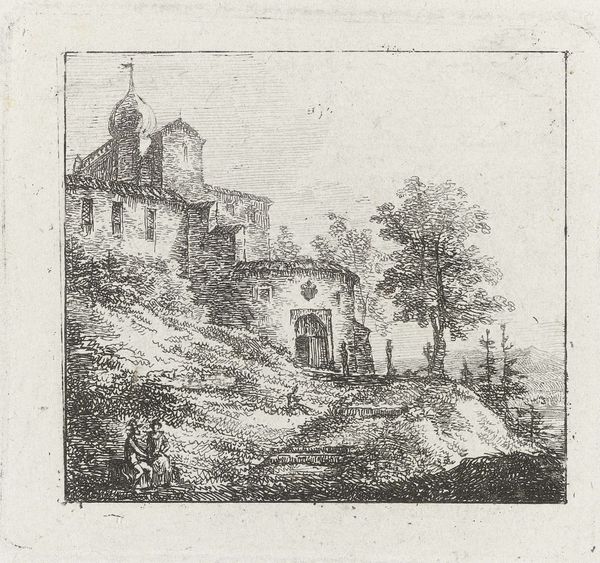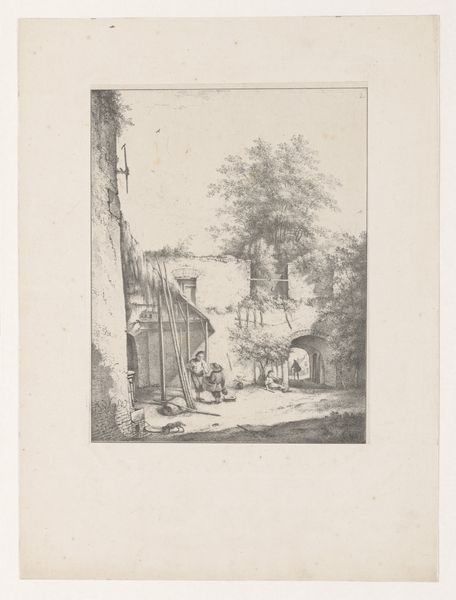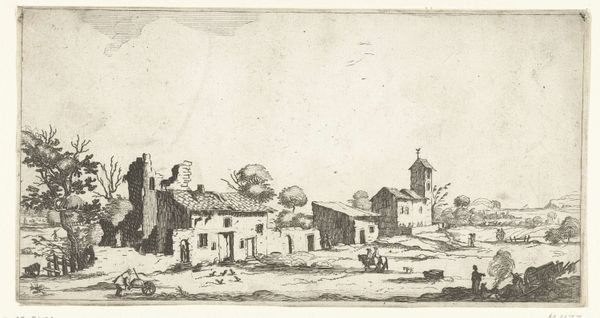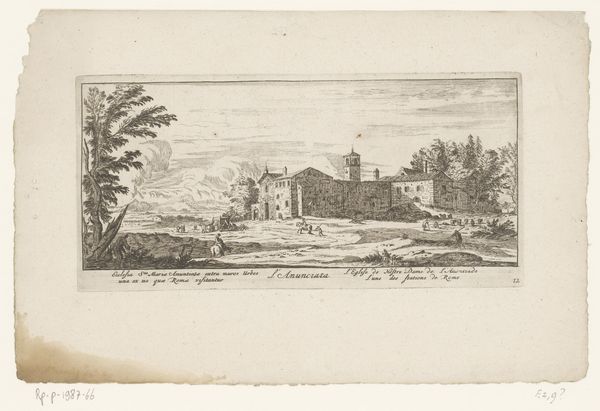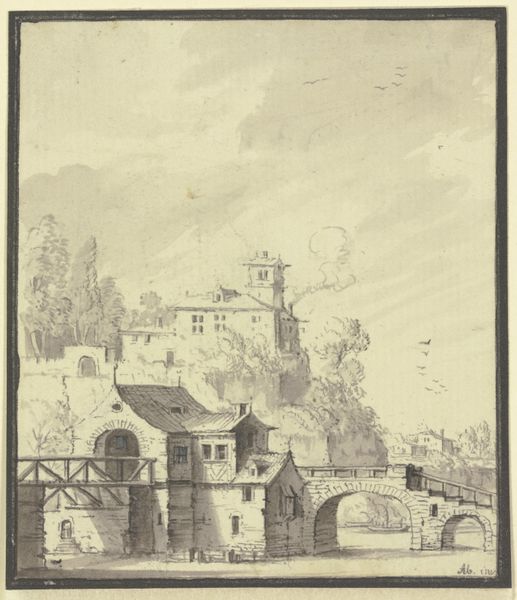
print, engraving
#
baroque
# print
#
old engraving style
#
landscape
#
cityscape
#
engraving
Dimensions: height 117 mm, width 99 mm
Copyright: Rijks Museum: Open Domain
Curator: Look at this remarkable engraving, "View of a Country House" by Johann Andreas Pfeffel, dating somewhere between 1725 and 1768. Editor: It has a sort of dreamlike stillness to it. The delicate lines of the engraving evoke a serene, almost ethereal atmosphere. Curator: Indeed. The artwork showcases a stately home, but consider how such images functioned within 18th-century society. Prints like these were circulated amongst the elite to convey status, projecting power and influence. Editor: It’s intriguing to examine the symbolism embedded within. The architecture, for instance, speaks of stability and dominion. And the body of water reflects…what exactly? Is it meant to represent opportunity, commerce, or perhaps a connection to something greater? Curator: Possibly all of the above. The watery element, skillfully delineated through those fine engraved lines, would remind the viewer of access to transportation, trade routes, and of course, expansion of power. The church depicted in the far back contributes to an idea of godly divine rights as well. Editor: The eye is drawn to the building on the left that feels so fortified, so imposing. Compared to the village on the other side, the contrast makes the building stand out so clearly. It has so many intricate details, the little windows, archways... the rest feels understated in comparison. Curator: Which likely fulfills the core aim of these landscapes. The building and its lands take center stage, as an idealized domain. How people wanted to be seen. The church placed so very small within the distance reinforces the land owner’s status above local community. Editor: Seeing it through that social prism gives me chills. I had just focused on the surface representation, the beautiful etching... and now I'm thinking about how it played into larger socio-political systems. Curator: Precisely. It reminds us that art never exists in a vacuum. These images, seen by the select few who had access to them, cemented existing hierarchies and projected the enduring dominance of the land-owning classes. Editor: What begins as an intimate, aesthetically pleasing scene becomes a window into complex social dynamics. Curator: Absolutely. It illustrates so clearly the narratives embedded within the visual culture of the past.
Comments
No comments
Be the first to comment and join the conversation on the ultimate creative platform.
